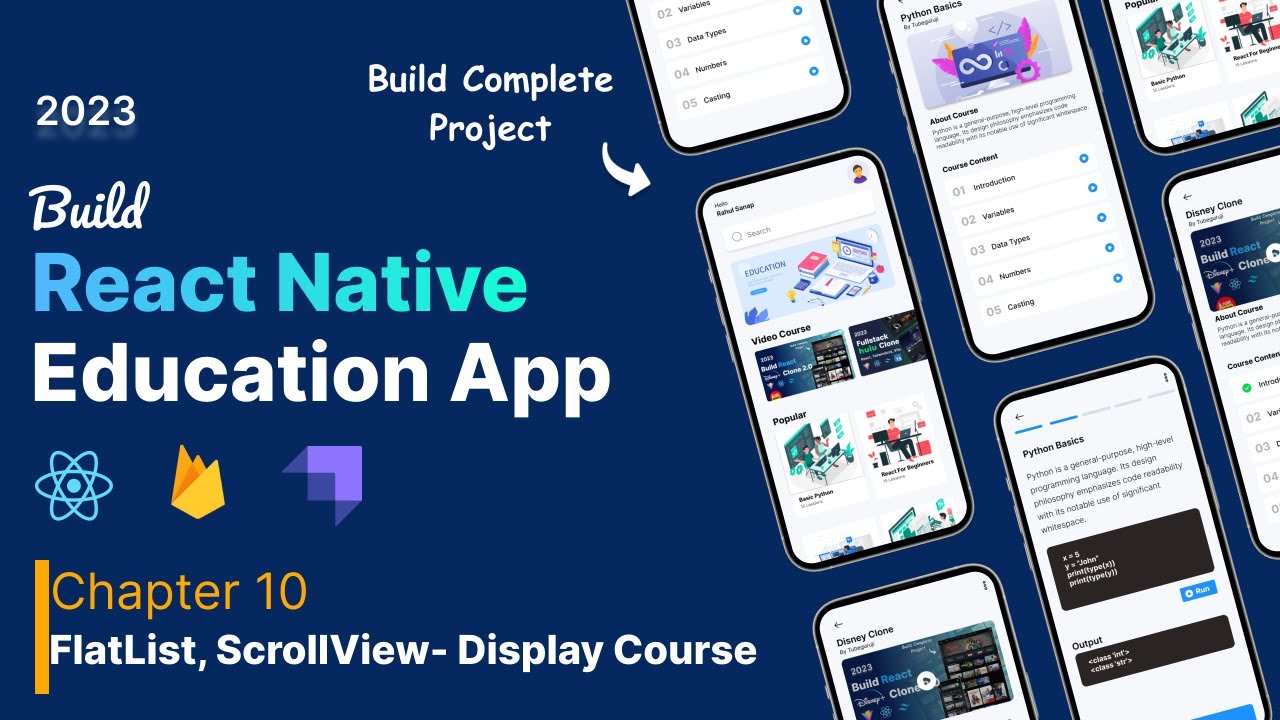Address
[wueseai_login_modal button_text="Sign In Now" button_class="px-6 py-3 bg-green-500 text-white rounded-full"]
Work Hours
Monday to Friday: 7AM - 7PM
Weekend: 10AM - 5PM
Address
[wueseai_login_modal button_text="Sign In Now" button_class="px-6 py-3 bg-green-500 text-white rounded-full"]
Work Hours
Monday to Friday: 7AM - 7PM
Weekend: 10AM - 5PM

This guide walks through creating a scrollable video course section in React Native using Strapi as the backend. You’ll learn to set up content structures, fetch data, and display it horizontally. An accompanying video demonstrates the complete implementation process.
Create a dynamic video course list by configuring Strapi content types, building a reusable React Native component, and implementing horizontal scrolling with FlatList. This approach allows flexible content management and smooth mobile UI interactions.
Start by creating a dedicated content type in Strapi for video courses. This structure will organize your course data efficiently. Navigate to the Content Type Builder in your Strapi admin panel to begin.
Add essential fields to your video course content type. Include fields like title, description, video URL, and course image. These elements will store the core information for each course in your app.
Implement a reusable component field for video topics. This allows adding multiple lessons per course with individual descriptions and video links. The component structure supports unlimited topics, making it scalable for complex courses.
Populate your content type with sample courses. For each entry, provide the title, overview text, cover image, and video URL. Then use the video topics component to add individual lessons with their own descriptions and embedded videos.
This flexible system lets you organize courses with varying numbers of lessons. Each topic can contain unique content while maintaining consistent data relationships within Strapi.
Create a new component file in your React Native project named VideoCourseList.js. This component will handle data fetching and rendering for your course section. Import it into your main app screen to display the content.
Set up a global API configuration to connect your app with Strapi. Add a new endpoint specifically for video courses that points to your Strapi API route. This establishes the communication channel between your frontend and backend.
Import the new endpoint into your component. This prepares the data-fetching mechanism that will retrieve course information from Strapi when the component loads.
Implement an asynchronous function to fetch video course data from your Strapi backend. Use the configured API endpoint to retrieve the course collection. The response will contain all your course entries with their associated data.
Map the response data to extract necessary fields like ID, title, description, image URL, and video topics. Store this processed data in a state variable to make it available for rendering in your component.
Use React Native’s FlatList component to display your courses horizontally. This approach provides smooth scrolling performance and efficient memory usage. Configure FlatList to render each course item in a row.
Pass your fetched course data to the FlatList component. Set the horizontal prop to true to enable side-to-side scrolling. This creates a swipeable interface where users can browse through courses.
Design each course item to display the cover image, title, and short description. The layout should be compact yet informative, allowing users to quickly scan available courses.
Within each course item, include the video topics component. This nested structure shows individual lessons when users interact with a course. The topics can display as a list or expandable section depending on your design needs.
The video topics data comes directly from your Strapi component field. This maintains consistency between your backend content structure and frontend display.
Yes, Strapi allows you to add custom fields anytime. Simply edit the content type builder to include new fields like instructor name, duration, or difficulty level. Your React Native component can then fetch and display this additional data.
Use React Native’s Image component with the source URI from your Strapi API. Implement loading indicators and error handling for better user experience. Consider caching images to improve performance in your app.
Absolutely. Remove the horizontal prop from FlatList to switch to vertical scrolling. Adjust your item layout accordingly to better utilize vertical space. The data-fetching logic remains the same regardless of scroll direction.
Implement pagination in Strapi using the start and limit parameters. Modify your API endpoint to accept these parameters. In React Native, use FlatList’s onEndReached prop to trigger additional data loads when users scroll near the bottom.
Building a horizontal video course list combines Strapi’s flexible content management with React Native’s powerful UI components. This setup creates an engaging way for users to browse educational content on mobile devices. The component-based approach ensures your solution remains maintainable and scalable as your course library grows.
Credit: Creator
Credit: Writer
Credit: Reviewer